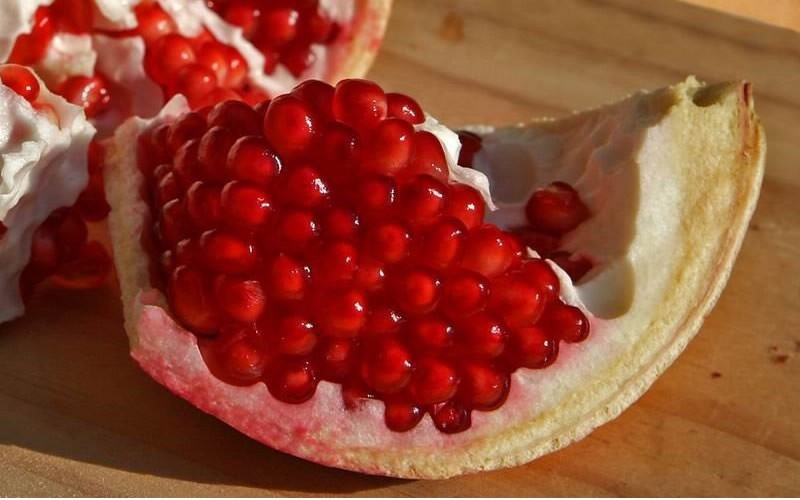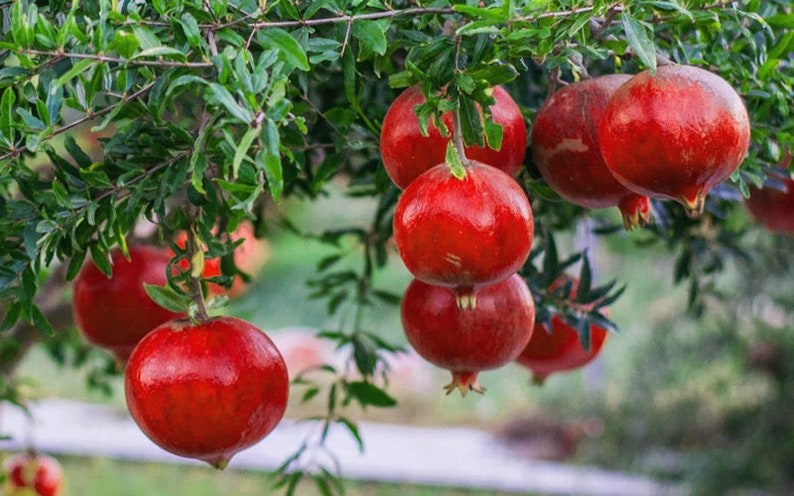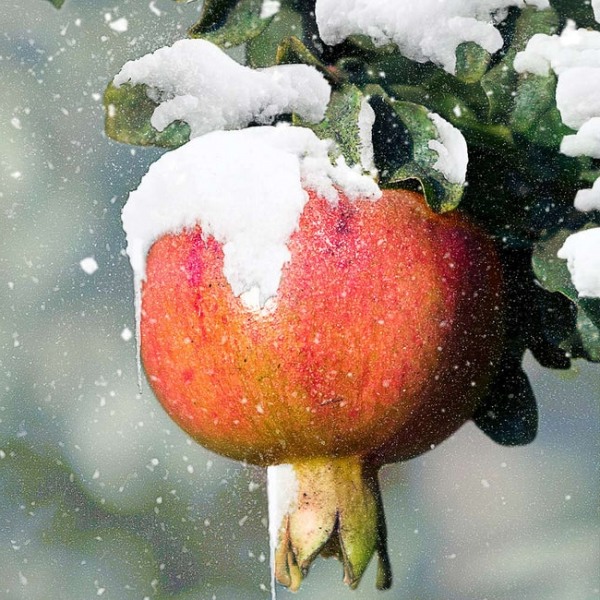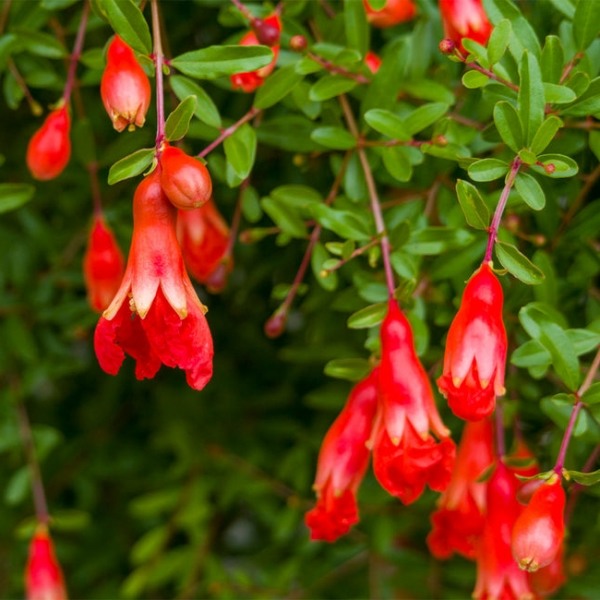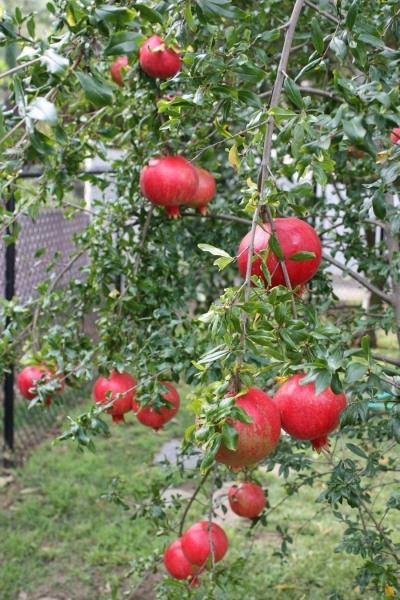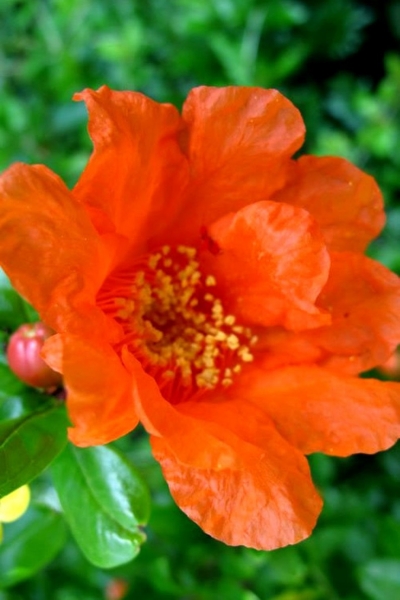Russian 26 Cold Hardy Pomegranate
| pomegranate |
It is a perennial tree, see how the Russian 26 cold hardy pomegranate looks like in the garden and landscape.
Russian 26 Cold Hardy Pomegranate is suitable for growing in USDA hardiness zones: 6b, 7a, 7b, 8a, 8b, 9a, 9b, 10a, 10b, 11a, 11b. Other winter zone scales for planting this pomegranate are ANBG: 1, 2, 3, 4, 5; RHS: H6, H5, H4, H3, H2, H1c; PHZ: 7b, 8a, 8b, 9a.
Pomegranate details
| Plant type | tree, fruit tree | ||||||||
| Life cycle | perennial | ||||||||
| Sun needs | full sun | ||||||||
| Growth habit | upright | ||||||||
| Flowering period | spring | ||||||||
| Height at maturity | 3 m - 4 m | ||||||||
| Spread | 3 m - 4 m | ||||||||
| Soil type | loamy, sandy, clay, silty | ||||||||
| Soil moist/drainage | well drained moist, well drained | ||||||||
| Soil PH | 5.5 - 7.0 (moderately acidic - neutral) | ||||||||
| Water needs | average, low when established | ||||||||
| Maintenance / care | low | ||||||||
| Resistance to | heat, cold | ||||||||
Winter hardiness zones:
| |||||||||
 Russian 26 Cold Hardy Pomegranate (Punica granatum) is a fruit-bearing deciduous shrub, that is widely cultivated throughout the Middle East and Caucasus region, north and tropical Africa, Iran, Armenia, the Indian subcontinent, Central Asia, the drier parts of Southeast Asia, and the Mediterranean Basin.
Russian 26 Cold Hardy Pomegranate (Punica granatum) is a fruit-bearing deciduous shrub, that is widely cultivated throughout the Middle East and Caucasus region, north and tropical Africa, Iran, Armenia, the Indian subcontinent, Central Asia, the drier parts of Southeast Asia, and the Mediterranean Basin.
The most cold and heat tolerant Pomegranate we've ever grown, in our Georgia USDA Zone 8a gardens 'Russian 26' has suffered no freeze damage down to 3 °F, it can be safely grown in USDA Hardiness Zones 6b - 11. This pomegranate is self-pollinating so you only have to plant one. But two plants enhance pollination and increases fruit production. Ripening period - summer to early fall depending on location.
In spring, your Russian 26 Pomegranate will produce lots of fluorescent orange single flowers that really light up the garden. The flowers are followed by large, bright orange-red fruit that are filled with delectable, nutrient-packed, dark red seeds that are amazingly sweet and said to be the sweetest of any Pomegranate.
Growing up to 10 feet tall and wide with a naturally rounded shape, the Russian 26 Pomegranate can be grown as a large shrub or lower branches can be removed to form an attractive small tree. Its electric-orange flowers, red fruits, and attractive foliage make the Russian 26 Pomegranate ideal for use as a specimen or in groupings in the ornamental landscape. A fine addition to the backyard orchard, tropical look gardens, orange and red theme gardens and cottage gardens.
Though pomegranates will tolerate most any type of average garden soil, as with most other fruit trees, Pomegranate grow best in a deep, loam soil rich in organic matter. Make sure to plant in a well-drained site because constantly soggy or wet soil can be problematic. Brief periods of flooding won't cause problems provided the soil is well-draining.
If you live in an area that can experience long rainy periods it's best to plant Pomegranate on raised beds or mounds.
Despite Russian 26 Pomegranate listed in USDA zone 6b, it't better to provide some winter protection for the tree. A 3 to 4 inch layer of mulch will help protect the roots during winter. Planting your Russian 26 Cold Hardy Pomegranate on the east side of a home or in a location where it will be sheltered from north and western winds will also help to provide protection during the cool season.
Russian 26 Cold Hardy Pomegranate @ wikipedia.
